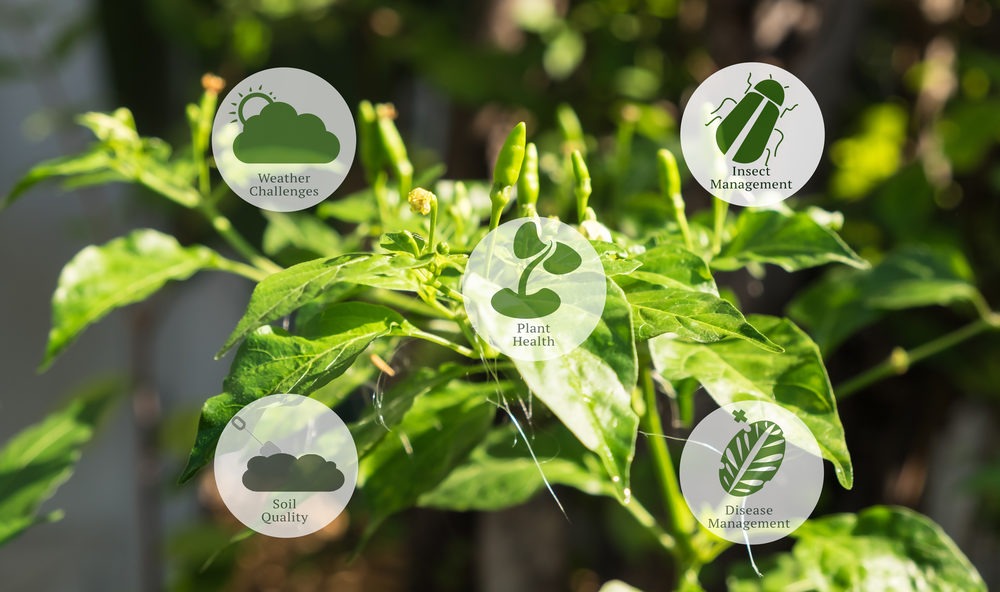Agtech companies offering IoT products to farmers have only scratched the surface of a market worth $4 billion in the US, which could be down to a lack of awareness and understanding of what’s available to them, according to a new report.
The Agriculture IoT Solutions report from research firm Alpha Brown estimates that 10% to 15% of farmers are using IoT solutions on the farm across 3.1 billion acres and 250,000 farms, and collectively they’re spending around $960 million.
IoT (Internet of things) in an agricultural context refers to the use of sensors, cameras, and other devices to turn every element and action involved in farming into data. Weather, moisture, plant health, mineral status, chemical applications, pest presence and much more can all be turned into large data sets that allow big data engineers to draw out insights about the farm at varying levels of granularity via software algorithms. As Alpha Brown emphasizes, IoT is not a product or particular tool, but a family of technologies.
The aim of most agriculture IoT products is to enable farmers to use these insights to make operational decisions around planting, irrigating, harvesting and more.
Alpha Brown surveyed more than 1,600 farmers producing a range of fruits and vegetables, livestock, grains, and dairy, mostly from the United States, to find out what they want from IoT technologies and if they’re ready to invest in them. The up-to-date surveys were conducted in March and April of this year.
Seeing the Possibilities
The findings are stark. Farmers are generally unaware of the IoT solutions available to them with less than 5% admitting to having knowledge of the subject; 68% of farmers were hearing the term for the first time. Only 12% of farmers reported that they were completely uninterested, however.
Ros Harvey, CEO of The Yield, an Australian AI driven micro-climate sensing, analytics, and prescription platform for the aquaculture and horticulture industries, told AgFunderNews that awareness is a major challenge and that the term IoT isn’t helping.
“The primary challenge for awareness among growers is the term IoT itself. If we were to ask growers about real-time sensors, weather stations or data from tractors, for example, they are all too aware of the technology and its importance, but more needs to be done as an industry to build awareness of and discussion around the Internet of Things and how analytics can be used to help support daily on-farm decision making,” said Harvey.
Adam Wolf, CEO of Arable Labs, the agriculture sensor, and analytics company, told AgFunderNews that using language that describes the function, rather than the tool, has been the best way forward for his team.
“I’ve found people are generally aware of soil moisture probes and weather stations, and maybe even pressure switches and valve controllers,” he said. “I don’t think this is different from farm implements like cultivators, discs, sprayers, or combine harvesters: people think of a thing as personifying the job they do.”
Alpha Brown suggests that discussions about IoT technologies avoid the term IoT since it doesn’t carry much meaning with farmers.
“The benefits of IoT derived technology need to be better explained,” said Manu Pillai, president and cofounder of WaterBit, a Californian startup building an autonomous irrigation solution (AIS) for produce and nut growers. “Irrespective of whether a grower buys from us or not, I insist my team answers all questions possible, and spend time talking about the impact of technology choices for a grower. There are resources for a grower to understand the pros and cons of various inputs – but not IoT related tech.
“It’s a marketing challenge for the industry and, with our research, we are trying to recommend where to focus the efforts on the most relevant sectors in terms of farm size and/or type of operations,“ added Gil Rabinovich, CEO of Alpha Brown. “The industry is running very fast, and farmers are having a problem catching up. This is why we ask in every survey about the level of awareness of the new tech options.”
Data management emphasis
Due to the lacking understanding of the term IoT, Alpha Brown surveyed farmers on the use of, and interest in, specific IoT tools to collect crop data, soil data, and livestock data, as well as aerial imaging and overall data management.
The breakdown shows farmers are most interested in data management and connectivity, placing more emphasis on the “internet” and less on sensors, or the “things.” This is consistent with farmers’ common request for technology that delivers actionable insights and not simply more data.
Looking at market share, the largest number of farming operations using IoT technology is in the grain and beef industries, which the report owes to those products being the most common in the US overall. A total of 72,000 beef farms use IoT and more than 45,000 grains farms use it as well, according to the report.
Greenhouses, though much smaller in number, are much more likely to utilize IoT technology, with 21% of greenhouse grower respondents using some form of IoT. Greenhouses are a logical home for IoT products since they tend to require more technology from the start, explains Alpha Brown.
Smaller farms also showed the most use and interest.
“Small farm owners realize that technology is vital if they need to continue making profits even in the reality of continuous profit erosion,” reads the report. With less room for error, the impact of good technology is more easily felt on small farms.
Also in the report, Alpha Brown breaks down the market size and market potential in each type of agriculture (greenhouse, livestock, fruits, vegetables, grains, and dairy) while offering further examples of existing Ag IoT companies.
Find the full report from Alpha Brown here.
*This post was sponsored by Alpha Brown*
Find out more about AgFunderNews’ limited sponsorship track here.




